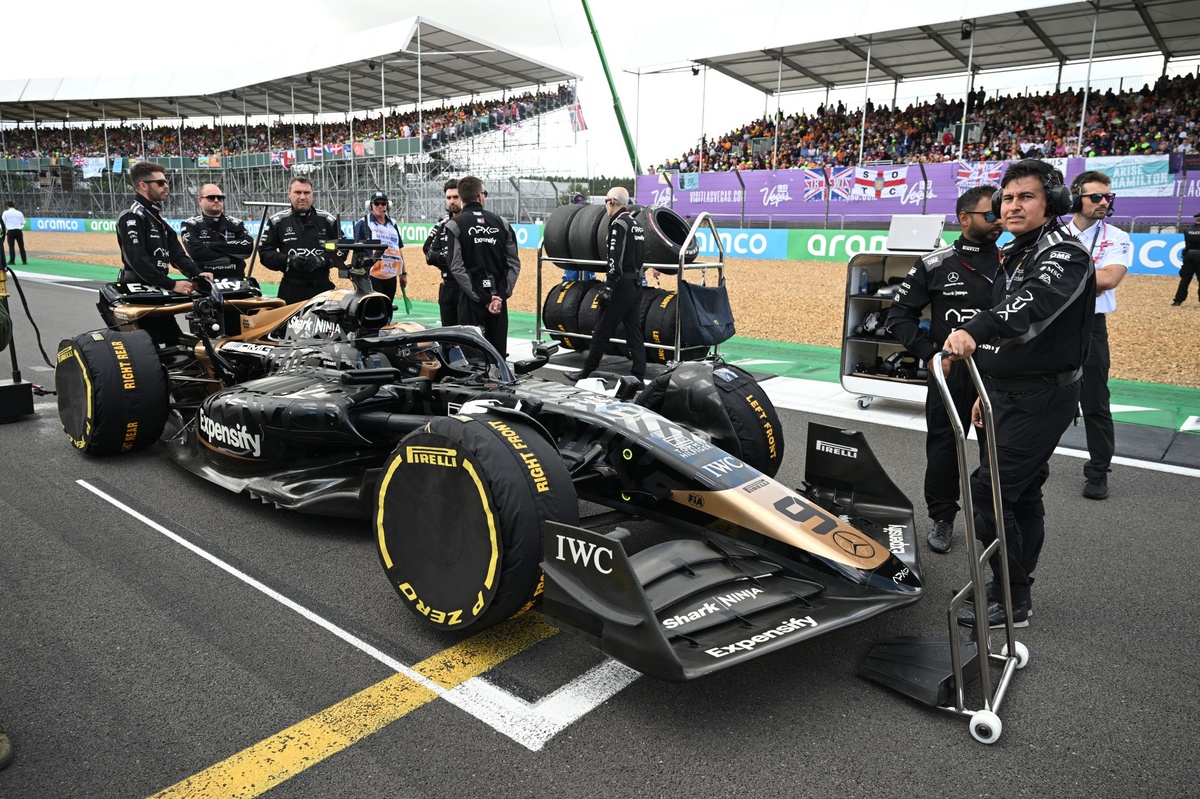The F1 movie has been a massive success, with gross global earnings of almost $300 million in just 10 days. But it wasn’t an easy production to put together. Not only did the team have to seamlessly integrate with Formula 1 and create camera technology that could capture the racing they wanted to feature, but they had to develop the cars that would house actors Brad Pitt and Damson Idris for much of the movie.
This was, as you’d expect, easier said than done. Mercedes helped in the development of the Dallara Formula 2 chassis, built to resemble F1 machinery for the fictional APXGP team and housing the technology needed for filming.
“It’s a competition Mecachrome engine… 3.4 [litre] twin-turbocharged, and we didn’t want to change much there obviously ’cause it’s a proven, you know, thing,” action vehicle supervisor Graham Kelly told Sam Collins of F1.
These engines are designed for consistent racing conditions, but temperature control quickly became an issue due to the stop-start nature of filming.
Tiesto with the F1 movie car
Photo by: Bryn Lennon / Formula 1 via Getty Images
“They will overheat in a minute and a half. We were right on that limit ’cause we were at the back of the grid. Everything pulled away and one of them didn’t,” Kelly said. “We were not allowed to go anywhere near [the ECU]… all the teams would have loved to have got some information out of that ECU, but no, the ECU was sealed.”
The team was only able to modify the gear ratios and had no access to the engine mapping to help manage engine temperatures.
“The engine – in our process of doing a run, coming back in, talking about it, going back out again – we were playing with temperature all the time,” he continued. “And with the brakes as well, not just with the engines.”
The solution was simple: build an electric version.
“Because of the experience I’ve had in the film industry, knowing the process that we go through to have a Formula 2 car with a Mecachrome engine come into the pitstop with us, doing a pitstop, filming it, stopping it, pushing it back, doing it again.
“That would have lasted 10 minutes before it would have gone catastrophically wrong. So I decided pretty early in this process that we should build an electric car.”
The all-electric version of the APXGP car featured a 400-volt Helix motor connected directly to the gearbox. Batteries powering the setup sat beneath the engine cover.
“In first gear, it would do 70mph… and it would do 70mph backwards. And we would do that probably for two hours. And it was great. It really worked in every part of that process because [the actors] could wheelspin out with all the torque – there’s instant torque – and we weren’t waiting for it to explode because it had got hot.
“So when you see the film, you’ll see a car boiling out of the pitlane with a screaming engine, but actually what you could be watching was actually the electric car. But I guess you can’t tell.”
In this article
Be the first to know and subscribe for real-time news email updates on these topics
Subscribe to news alerts
